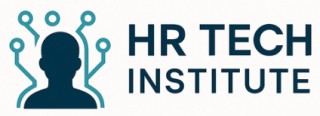
The Evolution of HR Document Management
The Shift from Physical to Digital Management
In recent years, the evolution of human resources document management has seen a significant transition from physical to digital management systems. Traditional management systems involved cumbersome paper files and storage cabinets. These manual processes required a lot of time and effort to maintain, often leading to human error, delayed access to documents, and challenges in ensuring data security.
Emergence of Document Management Tools
The advent of document management software has transformed the way HR departments handle employee files. These tools offer a plethora of features designed to streamline document storage and access, with the capability to store employee records securely in the cloud. This has not only enhanced data security but also improved compliance with ever-evolving regulations. With the best practices in place, organizations can now manage employee documents more efficiently.
Cloud-Based Systems for Better Accessibility
Cloud-based management software allows HR professionals to access documents from anywhere, providing them with timely access to necessary files. This flexibility helps optimize employee engagement, allowing HR personnel to focus more on strategic initiatives rather than being bogged down with administrative tasks. A secure cloud system ensures that sensitive information such as performance reviews and employee records are protected against unauthorized access.
Linking existing systems with this modern technology is proving advantageous. Discover more about enhancing efficiency with integrated solutions.
Key Features of Modern HR Document Management Software
Unveiling the Core Attributes
In the realm of human resources, managing employee documents efficiently is paramount. Modern HR document management software has evolved to be more than just a repository of files. The latest systems are dense with features that not only ensure smooth storage but also enhance functionality across the board. Comprehensive and Centralized Storage: At the heart of these systems is a centralized platform where all employee files are stored securely. This feature eliminates the anxiety of lost or misplaced documents and enables quick access to employee records anytime, anywhere. Advanced Search Capabilities: Finding the right document is seamless with advanced search tools. Whether it's employee performance reviews or other critical records, the document locator effectively parses through large volumes of data expeditiously. Cloud-Based Accessibility: With cloud-based technology, seamless access to documents is facilitated, breaking geographical barriers and enabling HR teams to retrieve necessary data without delays. This is particularly beneficial for remote teams or companies with multiple locations. Enhanced Security Measures: Protecting sensitive employee information is non-negotiable. Cutting-edge security features, like encryption and two-factor authentication, are intrinsic to this software, ensuring data security and compliance with industry best practices. Compliance and Audit Readiness: Being audit-ready is a breeze as these systems automatically maintain compliance by implementing and updating required regulations, safeguarding the organization from potential legal risks. For those navigating through the myriad of available solutions, it may be insightful to explore the market comparison between different HR tech solutions such as ICIMS and UKG. The right software will seamlessly blend into your existing systems, offering benefits that extend well beyond document storage.Improving Compliance and Security with HR Document Management
Boosting Compliance and Security in HR Document Management
Compliance and security are two pillars that hold up modern HR document management systems. The digital age necessitates a robust approach to safeguarding sensitive data, particularly when it involves employee files and records. As HR departments transition from paper to digital, the need for secure management of employee documents and files becomes paramount. To begin with, compliance with various legal standards and industry regulations is crucial in document management. Many companies utilize advanced management software to ensure they adhere to compliance obligations related to data protection and privacy. This software not only supports legal compliance but also facilitates the implementation of best practices in employee document management, ultimately helping HR departments avoid potential legal issues. Security protocols are integral features of these modern systems. Document software today comes with multi-layered security features including encryption, two-factor authentication, and secure document storage. These features work in tandem to shield sensitive data and restrict unauthorized access. Protecting employee records, such as performance reviews and sensitive employee documents, requires leveraging these advanced security tools. Furthermore, management software ensures that access documents are restricted to authorized personnel only, with detailed audit trails to monitor access and modifications. This not only boosts the security of the system but also builds trust among employees, knowing their private information is handled with care. In order to keep up with the best practices, organizations should regularly conduct security assessments and update their systems to counteract emerging threats. This proactive approach helps HR departments maintain high standards of data security. Lastly, in a cloud-based environment, access to files and document locators is significantly enhanced without compromising security. This allows HR teams to manage documents efficiently while remaining compliant with the ever-evolving data security regulations. For more insight into compliance strategies in HR tech, you may find this resource on understanding the dynamics of compensation cycles in HR tech valuable.Enhancing Employee Experience Through Efficient Document Management
Optimizing the Employee Journey with Seamless Document Access
Human resources departments have long recognized the importance of efficient document management in enhancing the employee experience. An organized management system not only streamlines the retrieval of documents but also ensures employees can effortlessly access the information they need without unnecessary delays.
Today’s modern document management software offers an array of tools designed to provide the best employee experience by simplifying file management. Features such as secure, cloud-based document storage allow for rapid, round-the-clock access to employee files from any location. This eliminates the frustration often associated with traditional document storage where accessing a file or employee records could take considerable time.
Moreover, integration with existing systems ensures that employees benefit from a unified platform. This seamless access to employee documents and important data helps to boost employee engagement and productivity. One of the key benefits of a well-implemented management software is the reduction in time employees spend on administrative tasks, such as obtaining copies of performance reviews or employment history data, freeing them up to focus on their roles and responsibilities.
Incorporating best practices in document software use can also improve both the security and compliance of employee records. This instills confidence in employees that their personal data is well-protected, which in turn fosters trust and enhances the overall employee experience. As the management system continues to evolve, it is crucial for HR departments to continually assess and adapt their document software to maximize both security and employee satisfaction.
Integrating HR Document Management Software with Existing Systems
Seamless Integration with Existing Systems
Integrating HR document management software with existing systems is crucial for any organization looking to optimize its HR processes. Many companies rely on a variety of systems for different HR tasks like payroll, employee records, and performance reviews. A well-integrated document management system ensures smooth transition and easier access to employee files across platforms.
Here are some key considerations for seamless integration:
- Compatibility: Ensure that the management software supports integration with your current applications. The best HR software solutions offer APIs or plugins to connect with other tools, enhancing data flow and minimizing duplicate entries.
- Data Security: Integration shouldn't compromise data security. The management system should maintain secure data exchange protocols to safeguard sensitive employee documents and ensure compliance with data protection regulations.
- Employee Access: Streamlined access to documents and files is vital for improved employee engagement. Cloud-based solutions enhance accessibility, allowing employees to view their employee file or conduct management tasks remotely, saving valuable time.
- Customization: Adapt the document management features to meet specific HR needs. Customizable options in your software can help align the system with existing HR workflows smoothly.
The benefits of integration extend beyond operational efficiency. A unified system enables better document locator functions, ensuring you and your employees can quickly find critical documents. Plus, having a centralized document storage system boosts overall compliance management and enhances the employee experience. Adopting these practices will help organizations manage their HR files more effectively, reaping the benefits of both security and enhanced employee performance.













